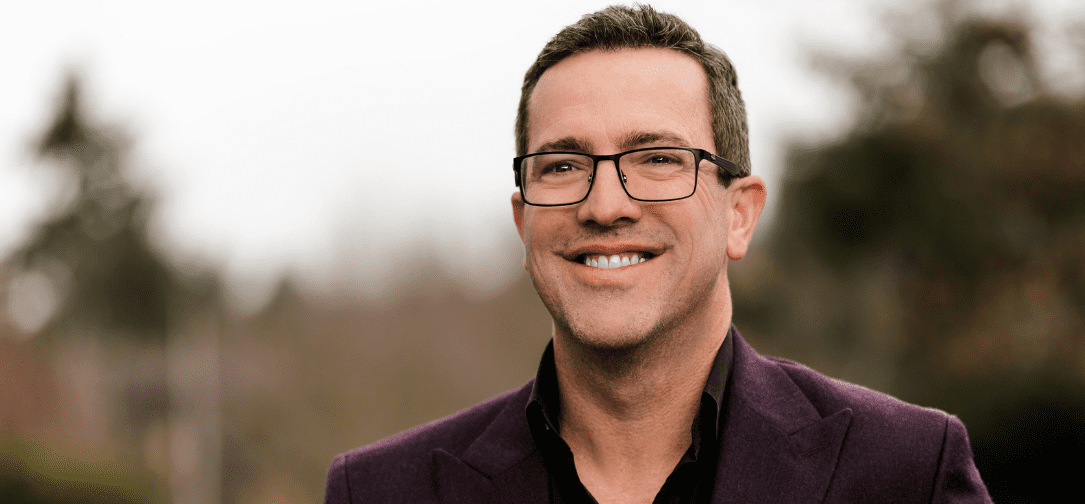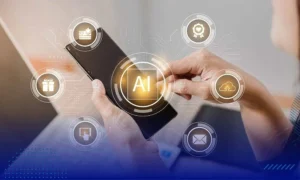As a response to the worrying high energy consumption, which is at an all-time high and a leading problem for specialized computing and data centers, Redivider Names nZero carbon management platform as the platform to provide emissions transparency for Redivider’s edge data centers. In this TechBullion interview with Tom Frazier, co-founder & CEO, Redivider, he will be sharing with us, more insights into how Redivider aims to usher in a new era of carbon transparency, while leading the discussion on true transparency of emissions and helping guide the marketplace into a better direction for humanity and the planet alike.
Please tell us more about yourself?
My name is Tom Frazier and I am the co-founder and CEO of Redivider. I’ve been in the tech industry for more than 25 years delivering innovation throughout the value chain for Fortune 50 companies to new startups alike. I have a deep understanding of the technical and business opportunities across a range of industries including data centers, AI, blockchain, and information security. Ultimately, I am passionate about staying at the forefront of innovation and always look for new opportunities to make a positive impact.
What is Redivider, what unique services does the company provide and what is your mission?
Redivider is a company that delivers “energy as impact” by deploying sustainable modular edge data centers throughout United States Opportunity Zones. Our mission is to uplift humanity and create a positive environmental impact with our data center offerings. We are focused on People, Planet and Profit in that order. Our facilities are designed for individual use cases like specialized computing, Bitcoin mining, AI, Smart Cities, and others. A campus can then host multiple modular facilities to optimize for a range of considerations from geography, latency, security, carbon routing, etc. This approach allows us to deploy quickly and cost efficiently for customers.
What was broken in data center carbon management and why is there a demand to set a new standard in data center emissions transparency?
It’s estimated that data centers globally use over two percent of the world’s electricity. The lack of a public baseline of data centers’ carbon emissions and embodiment make it difficult to build improvement systems necessary for companies that are compelled to align with the United Nations Sustainability Development Goals and other sustainability initiatives.
The demand for new solutions stem from over-service and/or misalignment of workloads compared to requirements due to the inflexibility of traditional facility designs. This leads to a higher CO2 footprint than necessary in many cases. Another good example highlighting demand is the media portrayal of Bitcoin mining. The Digital Asset Mining Excise tax (DAME tax) proposed by the White House this month is a 30 percent tax on industrial scale US Bitcoin mining companies. We believe it is the proverbial “canary in a coal mine” for the data center industry at large to literally clean up our act.
So, without exceptional improvement in carbon accounting, the US may cede its leadership position as the pinnacle jurisdiction for digital innovation. Redivider is building this into our offerings and supply chain so organizations can, with very little effort, create dramatic improvements in their own carbon footprint by simply migrating their computing to Redivider facilities.
Energy consumption is at an all-time high and a leading problem for today’s specialized computing and data centers in general. Could you give us a statistical overview of the energy consumption market?
First off, growth in energy demand is good! The implications of this are correlated to the application of benefits derived from the beginnings of the 4th Industrial Revolution. In fact, we expect a 2-4X growth in demand just for data centers (see https://link.redivider.co/applied-energy). Most of the 4IR domains from AI to computer vision to mobility, have unique or specialized computing requirements. The environmental footprint of data creation, primarily carbon and water consumption, makes the focus on clean energy solutions paramount as we continue to expand consumption. To give a sense of scale, 90 percent of all the data ever generated was in the past two years.
Second, the growth in consumption is compounded by both global data center traffic and mobile traffic (see https://link.redivider.co/data-tsunami). We believe by placing smaller modular data centers closer to the source of data, we can add significant efficiency to the energy required… that is our definition of the edge.
Third, the US is now on its back foot regarding energy capacity. The Henry Adams curve has shown us that the energy consumption per capita has remained relatively flat since the 70s despite major growth in population. Due to a range of factors like grid complexity, regulatory frameworks and reliance on importation of oil, America’s energy supply hasn’t kept pace. Data centers are faced with fierce competition for a very limited amount of energy resources. Put bluntly, there isn’t enough grid energy to meet future demands that creates a secondary order effect of dramatically higher energy prices for consumers and businesses alike.

Finally, speaking about future demands, they are crazy. The data growth rate is accelerating beyond comprehension. In 2018, the world produced 33 zettabytes of data (a zettabyte is one trillion gigabytes). It is anticipated by many that by 2025 that figure will reach 175+ zettabytes (one source: https://link.redivider.co/vmlCSq). The primary growth in data creation is related to the telemetry data from sensors, IoT, industrial automation, robotics, etc. Renewable energy sources aren’t coming online anywhere near the rate of growth of data either.
So the real question is, will datacenters be seen as too important to fail and be allowed to use poor quality energy sources, like coal, to meet demands of consumers or will the world need to dial back their data consumption? We believe there is a third option: prime onsite power generation. Redivider is implementing micro-grid island solutions that use various fuel sources combined with recovering heat that can be used to cool data centers, increasing both our efficiency, emissions and leaving the grid energy for consumers to keep their bills low.
Tell us more about the nZero platform, how it works and why it is the best to help you reach your quest?
Redivider selected nZero because we believe their carbon management platform is market leading in a few areas. The first is the ability for us to deliver customers transparency of our carbon footprint in context of the GHG Protocol. Second, their real-time collection and retroactive adjustments to changes in grid power mix, which is the ratio of fuel types provided to any facility, allow us to have an accurate view of our embodied carbon and emissions. This is critical given data from energy providers can be incorrect by +/-20% or more. Finally, the Redivider carbon portal can then be integrated by customers as well as the many city/state initiatives that nZero is building alliances with. This approach creates value to people and the planet greater than what we can provide on our own.
Why is data a necessity in today’s society and how can we continue to benefit from its yields and still mitigate and manage its impact carefully?
We like to say that the only thing humans consume more than data is water. It has become an inseparable part of our daily lives. It is expected that consumers will have 5,000 digital interactions per day by 2025, up from the 700 to 800 or so that people average today. Data consumption is also starting at younger ages, it is being used in more and more areas of our lives and helps us make more informed decisions. With the sensor-ization of everything, everywhere all-at-once, the data beyond consumer consumption can help make a better society.
The environmental impact of data is not broadly discussed or understood. The gravity of data is largely concentrated in a few US companies that present management risk. The primary function of edge computing localizes where data is stored and processed and can add significant risk mitigation for people and communities.
Why should organizations aim to reach their carbon reduction goals, how can nZero help my company reduce emissions and save money and what future impacts can we expect from implementing more sustainable practices in the tech industry?
Companies have struggled to implement the UN Sustainability Development Goals (SDG) largely due to complexity. Since Redivider prioritizes Corporate Social Responsibility (CSR) alongside our sustainability methods, we make it easy for companies to make a meaningful difference in their SDG implementations simply by airlifting their computing to Redivider with little to no other changes.
With a planned rollout of 100s of facilities throughout the US, customers can pick their desired locations based on their workload, latency, carbon, impact, security, and capacity needs. We give businesses flexibility.
Additionally, customers will have transparency in their Scope 2 emissions from Redivider facilities. This baseline is typically unavailable by traditional data centers in most cases and over time, they could reduce their emissions due to our clean energy model with natural gas, hydrogen, etc and our continual improvement models against our baseline.
Achieving carbon neutrality has been a cornerstone of the Redivider platform. Who are your early advocates?
We have many partners rallying behind us with nZero being our first publicly announced. This is a key milestone for fulfilling our vision. We are very excited about our advisory board including Miami Mayor Frances Suarez who is an advisory board member as well as a very vocal advocate for achieving carbon neutrality. We have a pending announcement of other industry leaders that share our vision for energy as impact.
How can Early Adopters of Redivider Get Started?
We’ve recently announced a new pioneer program for businesses to be among the first to experience our state-of-the-art edge data center solutions. Businesses can apply to become “Founding Edge Members” and receive early access to Redivider’s offerings and gain a competitive advantage in their business and customers. Founding Edge Members will also provide feedback and insights to shape the future of Redivider’s services and will be helping to create positive change by supporting local communities and sustainable practices. You can find out more about our pioneer program at www.redivider.co/pioneers.
Do you have any available opportunities for investors or partnerships to help you in this mission? Any more tips to share with our readers today?
Redivider is always open to discussing opportunities that will further our core mission to uplift humanity and create a positive environmental impact. We welcome conscious minded investors wanting to build a better future that is focused on people, planet and profit. You can contact us via our website at www.redivider.co.

































